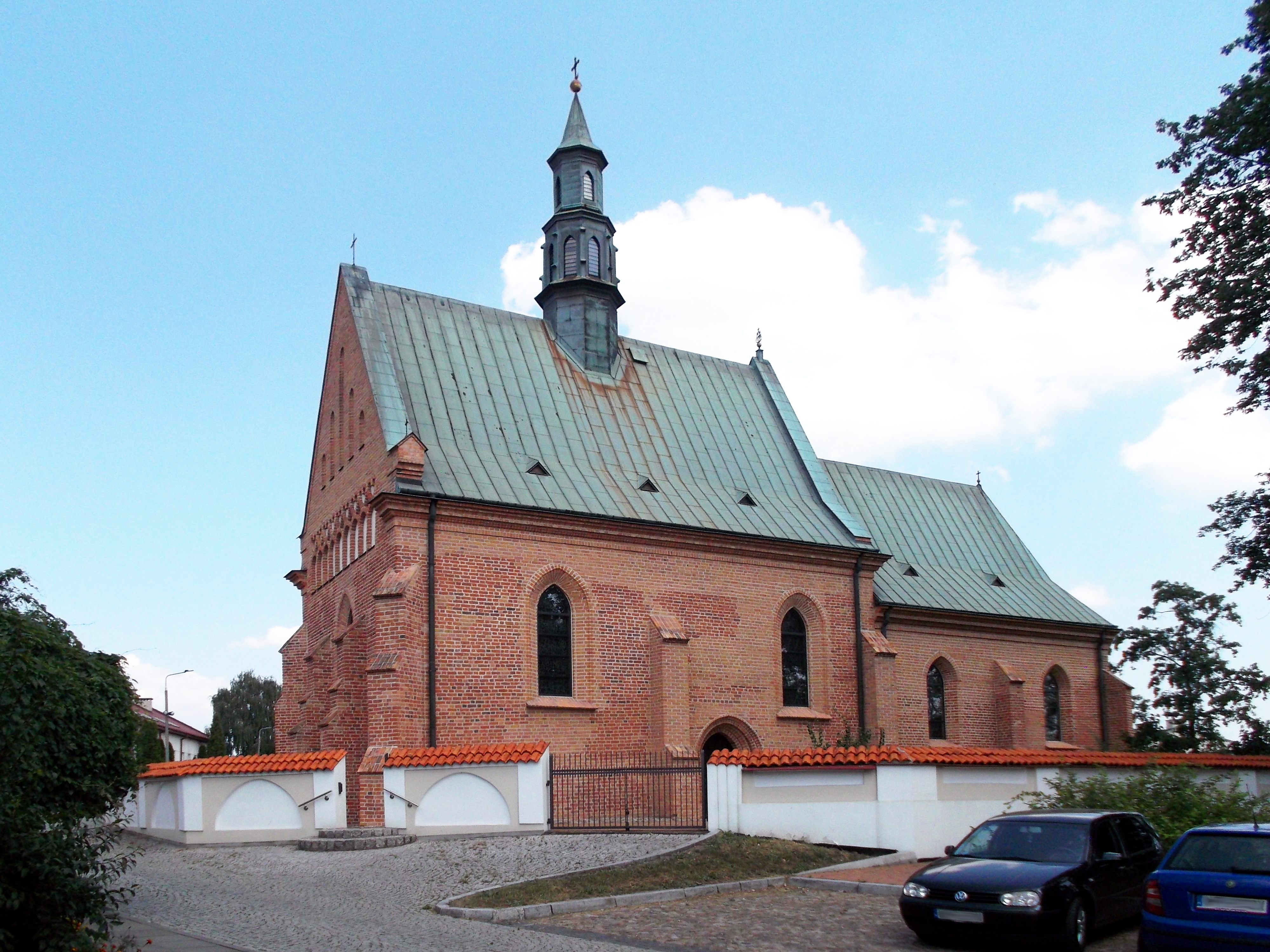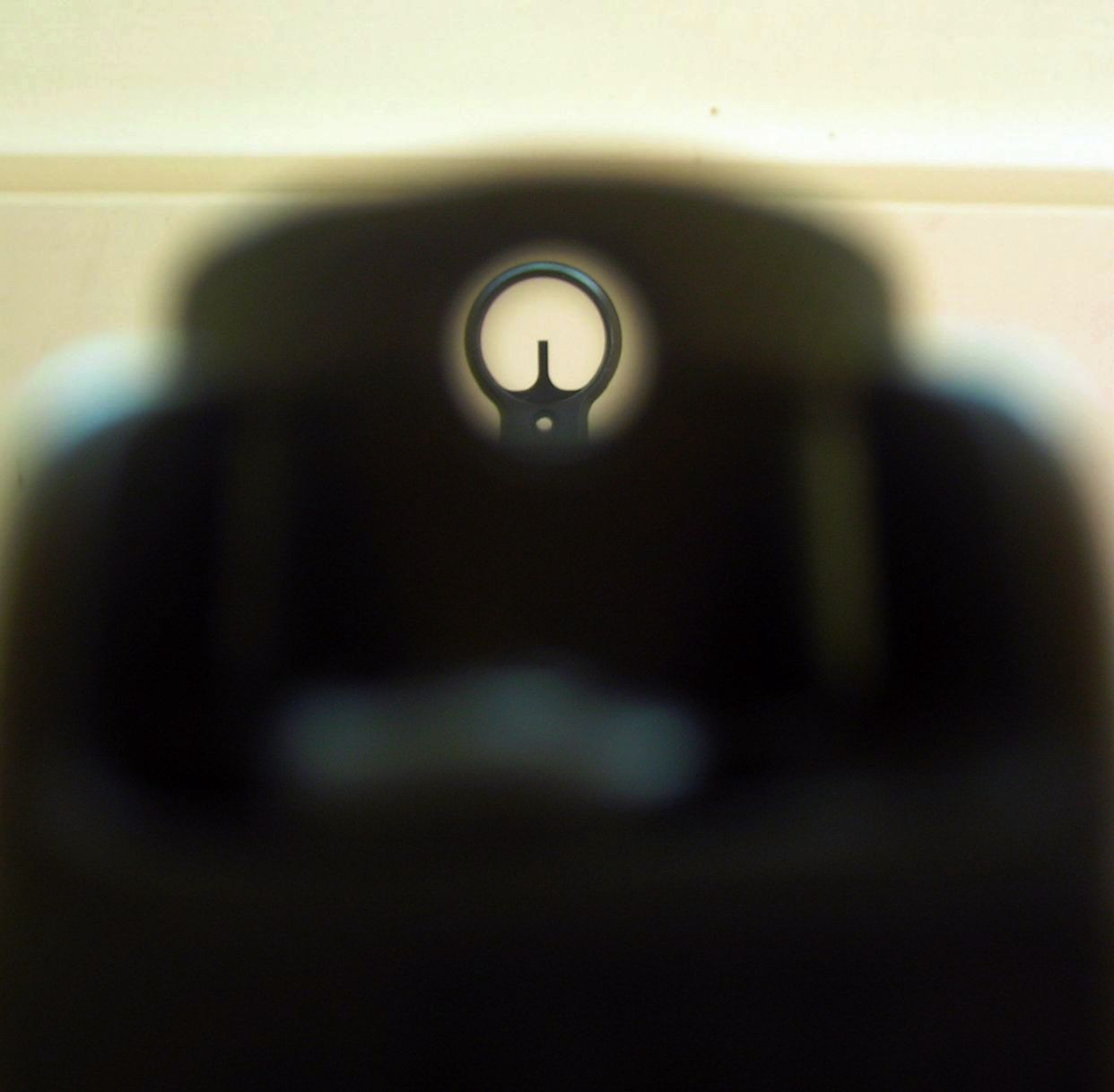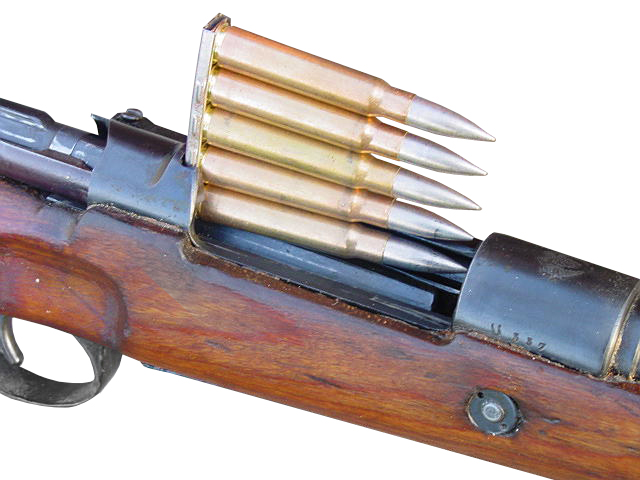|
Gewehr 43
The Gewehr 43 or Karabiner 43 (abbreviated G43, K43, Gew 43, Kar 43) is a 7.92×57mm Mauser caliber semi-automatic rifle developed by Germany during World War II. The design was based on that of the earlier Gewehr 41, G41(W) but incorporated an improved short-stroke Gas-operated reloading, piston gas system as well as a detachable magazine and relocated Cocking handle, charging handle. History Germany's quest for a semi-automatic infantry rifle resulted in two designs – the G41(M) and G41(W), from Mauser and Walther Arms respectively. The Mauser design was introduced in 1941 and at least 12,755 were made, but it proved unreliable in combat. The Walther design fared better in combat but still suffered from reliability problems. The problems with both designs stemmed from a demand made by the Army that the rifles would not use holes drilled into the barrel, known as ''gas ports'', to run the automatic loading mechanism. Meeting this requirement meant the designs had to use u ... [...More Info...] [...Related Items...] OR: [Wikipedia] [Google] [Baidu] |
Swedish Army Museum
The Swedish Army Museum () is a museum of military history located in the district of Östermalm in Stockholm. It reopened in 2002 after a long period of closure, and was awarded the title of the best museum of Stockholm in 2005. Its displays illustrate the military history of Sweden, including its modern policy of neutrality, and of the Swedish Army. History The Army Museum has been located at Artillerigården in Östermalm, Stockholm, since it was opened in 1879. The site has been used for military purposes since the middle of the 17th century, and the main depot of the artillery was located here for nearly 300 years. The current buildings were erected during the latter part of the 18th century. The museum was first known as the Artillery Museum, and changed its name to the Army Museum at the beginning of the 1930s, in order to reflect more accurately the focus of the museum. The museum underwent a major refurbishment and opened in new, modern premises in 1943. Exhibitions Th ... [...More Info...] [...Related Items...] OR: [Wikipedia] [Google] [Baidu] |
Operation Barbarossa
Operation Barbarossa was the invasion of the Soviet Union by Nazi Germany and several of its European Axis allies starting on Sunday, 22 June 1941, during World War II. More than 3.8 million Axis troops invaded the western Soviet Union along a front, with the main goal of capturing territory up to a line between Arkhangelsk and Astrakhan, known as the A-A line. The attack became the largest and costliest military offensive in history, with around 10 million combatants taking part in the opening phase and over 8 million casualties by the end of the operation on 5 December 1941. It marked a major escalation of World War II, opened the Eastern Front—the largest and deadliest land war in history—and brought the Soviet Union into the Allied powers. The operation, code-named after the Holy Roman Emperor Frederick Barbarossa ("red beard"), put into action Nazi Germany's ideological goals of eradicating communism and conquering the western Soviet Union to repopulate it w ... [...More Info...] [...Related Items...] OR: [Wikipedia] [Google] [Baidu] |
Radom
Radom is a city in east-central Poland, located approximately south of the capital, Warsaw. It is situated on the Mleczna River in the Masovian Voivodeship. Radom is the fifteenth-largest city in Poland and the second-largest in its province with a population of 196,918 (30.06.2023) Radom was a significant center of administration, having served as seat of the Polish Crown Council which ratified the Pact of Vilnius and Radom between Lithuania and Poland in 1401. The Nihil novi and Łaski's Statute were adopted by the Sejm at Radom's Royal Castle in 1505. In 1976, it was a center of the June 1976 protests. Despite being part of the Masovian Voivodeship, the city historically belongs to Lesser Poland. The city is home to the biennial Radom Air Show, the largest air show in the country, held during the last weekend of August. "Radom" is also the popular unofficial name for a semiautomatic FB Vis pistol, which was produced from 1935 to 1944 by Radom's Łucznik Arms Factory. ... [...More Info...] [...Related Items...] OR: [Wikipedia] [Google] [Baidu] |
FB Vis
The Vis (Polish designation ''pistolet wz. 35 Vis''; German designation ''9 mm Pistole 35(p)'', or simply the Radom in some English sources and Vis wz. 35 in Poland) is a Polish 9×19mm caliber, trigger (firearms), single-action, semi-automatic pistol. Production of the Vis began in 1935 at the Fabryka Broni factory in Radom, and was adopted as the standard handgun of the Polish Army the following year. After the Polish Campaign of 1939 that marked the start of World War II, occupying German forces took over the country's munitions and industry; the pistol was valued by the Germans, who continued its production and eventually issued it to Waffen-SS units. The Vis is highly prized among collectors of firearms and considered by some to be one of the best firearms of the period, combining some of the features present in the Colt M1911, the Browning Hi-Power, and the Llama_Firearms#Ruby_"Colt"_transitional_models , Ruby .45 ACP. History Background The Polish Army inherited a larg ... [...More Info...] [...Related Items...] OR: [Wikipedia] [Google] [Baidu] |
Neuengamme Concentration Camp
Neuengamme was a network of Nazi concentration camps in northern Germany that consisted of the main camp, Neuengamme, and List of subcamps of Neuengamme, more than 85 satellite camps. Established in 1938 near the village of Neuengamme, Hamburg, Neuengamme in the Bergedorf district of Hamburg, the Neuengamme camp became the largest concentration camp in Northwest Germany. Over 100,000 prisoners came through Neuengamme and its Subcamp (SS), subcamps, 24 of which were for women. The verified death toll is 42,900: 14,000 in the main camp, 12,800 in the subcamps, and 16,100 in the Death marches (Holocaust), death marches and bombings during the End of World War II in Europe, final weeks of World War II. Following Germany's defeat in 1945, the British Army used the site as an List of concentration and internment camps, internment camp for Schutzstaffel, SS and other Nazism, Nazi officials. In 1948, the British transferred the land to the Free Hanseatic City of Hamburg, which summarily de ... [...More Info...] [...Related Items...] OR: [Wikipedia] [Google] [Baidu] |
Wilhelm Gustloff Stiftung
The Wilhelm Gustloff Stiftung (Wilhelm Gustloff Foundation) was a state-owned trust set up by the government of Nazi Germany in 1933. Named after Wilhelm Gustloff, a leader of the Nazi Party's Swiss branch who was later assassinated, it was funded by money and property confiscated from German Jews. It was disbanded like all other Nazi organizations in 1945, after the fall of Nazi Germany. Overview The Foundation ran the ''Gustloff Werke'' ("Gustloff Factories"), a group of businesses confiscated from their Jewish owners or partners. By 1938 it had been organized into five major branches. Factories Gustloff Werk Weimar was formerly ''Bautzener Waggon- und Maschinenfabrik AG'', a branch of Simson & Co. Suhl and was situated in Weimar, Thüringen. The company originally made wagons and tools. Under the new management it expanded into making ammunition crates, ammunition trailers, light infantry mortars (50mm caliber), anti-tank artillery (50mm, 75mm and 88mm caliber), anti-aircraft ... [...More Info...] [...Related Items...] OR: [Wikipedia] [Google] [Baidu] |
German Ordnance Codes
German(s) may refer to: * Germany, the country of the Germans and German things **Germania (Roman era) * Germans, citizens of Germany, people of German ancestry, or native speakers of the German language ** For citizenship in Germany, see also German nationality law **Germanic peoples (Roman era) *German diaspora * German language * German cuisine, traditional foods of Germany People * German (given name) * German (surname) * Germán, a Spanish name Places * German (parish), Isle of Man * German, Albania, or Gërmej * German, Bulgaria * German, Iran * German, North Macedonia * German, New York, U.S. * Agios Germanos, Greece Other uses * German (mythology), a South Slavic mythological being * Germans (band), a Canadian rock band * "German" (song), a 2019 song by No Money Enterprise * ''The German'', a 2008 short film * "The Germans", an episode of ''Fawlty Towers'' * ''The German'', a nickname for Congolese rebel André Kisase Ngandu See also * Germanic (disambiguatio ... [...More Info...] [...Related Items...] OR: [Wikipedia] [Google] [Baidu] |
Berlin-Lübecker Maschinenfabrik
Berlin-Lübecker Maschinenfabrik (BLM) was a manufacturer of handguns, infantry rifles, ammunition up to 2 cm, flareguns and precision military equipment in Germany from 1936 to 1945. The company, based in Lübeck, Germany, was one of a number of metal-related businesses owned by Bernhard Berghaus, a German industrialist and member of the Nazi party who played an important role in the rearmament of Germany during the Third Reich. BLM had a reported labor force of 3,809 in August 1944, comprising 1931 German men, 539 German women, 467 foreign women, 752 foreign men, and 120 war prisoners. The foreign workers were housed in onsite barracks. After the war, Berghaus was sought by the Allies for his participation in using forced labor in his facilities. The plant, located on Curt-Helms-Str. (today: Glashüttenweg), sat along the eastern bank of the Trave River north of the old City of Lübeck, an island in the Trave River. Karabiner 98k Rifle From 1936 to 1942, the company manu ... [...More Info...] [...Related Items...] OR: [Wikipedia] [Google] [Baidu] |
Iron Sight
Iron sights are a system of physical alignment markers used as a sighting device to assist the accurate aiming of ranged weapons such as firearms, airguns, crossbows, and bows, or less commonly as a primitive finder sight for optical telescopes. Iron sights, which are typically made of metal, are the earliest and simplest type of sighting device. Since iron sights neither magnify nor illuminate the target, they rely completely on the viewer's naked eye and the available light by which the target is visible. In this respect, iron sights are distinctly different from optical sight designs that employ optical manipulation or active illumination, such as telescopic sights, reflector (reflex) sights, holographic sights, and laser sights. Iron sights are typically composed of two components mounted perpendicularly above the weapon's bore axis: a 'rear sight' nearer (or 'proximal') to the shooter's eye, and a 'front sight' farther forward (or 'distal') near the muzzle. During aim ... [...More Info...] [...Related Items...] OR: [Wikipedia] [Google] [Baidu] |
Karabiner 98k
The Karabiner 98 kurz (; ), often abbreviated Karabiner 98k, Kar98k or K98k and also sometimes incorrectly referred to as a K98 (a K98 is a Polish carbine and copy of the Kar98a), is a bolt-action rifle chambered for the 7.92×57mm Mauser cartridge. It was adopted on 21 June 1935 as the standard service rifle by the German ''Wehrmacht.''K98k Mauser Page Retrieved 28 March 2007. It was one of the final developments in the long line of Mauser military rifles. Although supplemented by semi-automatic and fully automatic rifles during World War II, the Karabiner 98k remained the primary German military rifles, German service rifle until the end of the war in 1945. Millions were captured by the Soviets at the conclusion of World War II and were widely distributed as military aid. The Karabiner 98k therefore continues to appe ... [...More Info...] [...Related Items...] OR: [Wikipedia] [Google] [Baidu] |
Detachable Box Magazine
A magazine, often simply called a mag, is an ammunition storage and feeding device for a repeating firearm, either integral within the gun (internal/fixed magazine) or externally attached (detachable magazine). The magazine functions by holding several cartridge (firearms), cartridges within itself and sequentially pushing each one into a position where it may be readily loaded into the gun barrel, barrel chamber (firearms), chamber by the firearm's moving action (firearms), action. The detachable magazine is sometimes colloquially referred to as a "clip (ammunition), clip", although this is technically inaccurate since a clip is actually an accessory device used to help load ammunition into a magazine or cylinder. Magazines come in many shapes and sizes, from integral tubular magazines on lever-action and pump-action rifles and shotguns, that may hold more than five rounds, to detachable box magazines and drum magazines for automatic rifles and light machine guns, that may h ... [...More Info...] [...Related Items...] OR: [Wikipedia] [Google] [Baidu] |
Gebirgsjäger
''Gebirgsjäger'' () is a German language, German military term for light infantry trained in mountain warfare. Currently used in the militaries of Germany, Austria and Switzerland, the term includes the word ''Jäger (military), jäger'', another German military term used to denote light infantry troops. Origins The Imperial-Royal Mountain Troops, mountain infantry of Austria have their roots in the three ''Landesschützen'' regiments of the Austria-Hungary, Austro-Hungarian Empire. The mountain infantry of modern Germany carry on certain traditions of the Alpenkorps (German Empire), German Alpenkorps (Alpine corps) of World War I. Both countries' mountain infantry share the Edelweiß insignia, established in 1907 as a symbol of the Austro-Hungarian ''Landesschützen'' regiments by Emperor Franz Joseph I. These troops wore the edelweiss on the uniform collar. When the ''Alpenkorps'' served alongside the ''Landesschützen'' on Austria's southern frontier against Italian Campaig ... [...More Info...] [...Related Items...] OR: [Wikipedia] [Google] [Baidu] |





